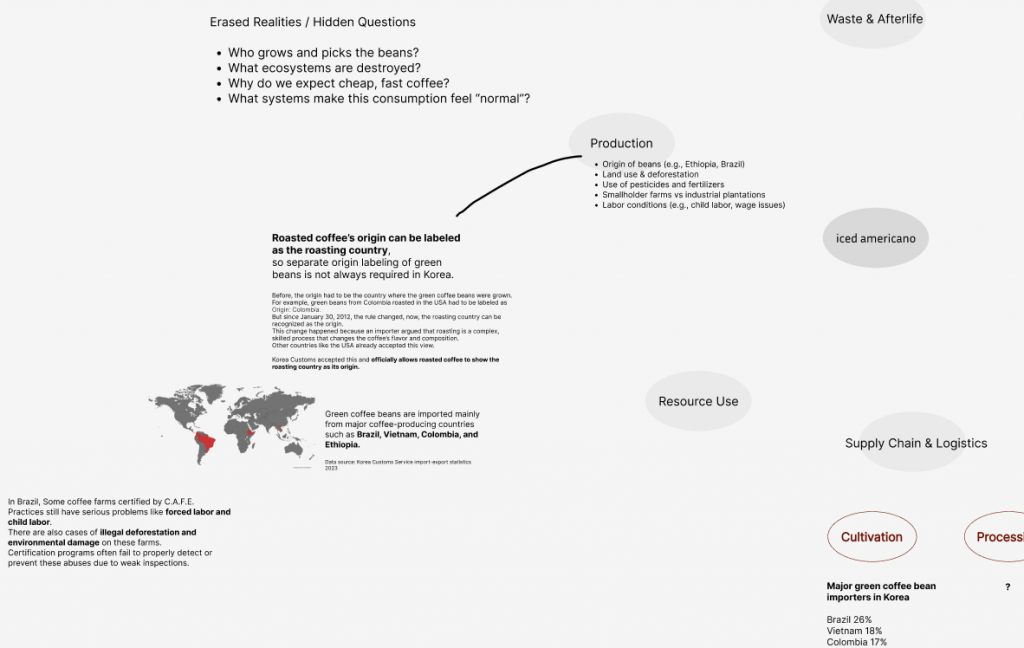Have you ever paused to wonder what’s really inside your morning coffee?
Not just the caffeine or aroma—but the layers of stories, labor, histories, and systems packed into that single cup.
Feminist scholar Donna Haraway calls this way of thinking an implosion map—a method that asks us to look inward, to uncover how everyday objects are shaped by global and local forces alike.
What Is an Implosion Map?
An Implosion Map is a conceptual tool used to trace all the social, political, environmental, and historical forces that converge in a single object or practice. It asks us to take something ordinary—like a bean, a shoe, a phone—and explode it inward, mapping all the power relations hidden inside it.
It was developed by feminist theorist Donna Haraway, who argued that nothing is “simple” when viewed critically. Everything is entangled.
I show the example here: coffee bean
🌍 Mapping the Coffee Bean: A Mini Implosion
Let’s take a single coffee bean and ask: what lives, systems, and histories does it hold?
| 🌱Agricultural | Where was the bean grown? Often in the Global South, under conditions shaped by climate change and export dependency. |
| ⚒️ Labor | Who picked the beans? Were they paid fairly? Many coffee workers live under precarious or exploitative labor conditions. |
| 🏛️ Colonial History | Coffee spread globally through colonial expansion (e.g., Dutch and French plantations in Indonesia, Africa, the Caribbean). |
| 💰 Economics | Who profits? Multinational corporations often take the largest share, while farmers receive a tiny fraction. |
| 🚢 Logistics | What fuel was used to ship the beans? What infrastructures (ports, ships, borders) had to be involved? |
| 🧼 Branding | How is coffee marketed? “Artisanal,” “fair-trade,” “ethical”—who decides what’s ethical, and who benefits from that label? |
| ☕ Culture | What meanings do we attach to coffee in different cultures? A symbol of hospitality, energy, rebellion, or sophistication? |
Why It Matters
Implosion maps help us see the invisible. They don’t just tell us about coffee—they reveal how global capitalism, colonialism, and everyday life are all interlinked.
In a decolonial kitchen, we don’t just cook—we ask:
What stories, systems, and struggles are inside what we eat and drink?
+ Related map to coffee bean : Iced-americano in South Korea

https://www.fern.org/publications-insight/what-is-the-link-between-coffee-and-deforestation
https://pmc.ncbi.nlm.nih.gov/articles/PMC11241280
https://www.weforum.org/stories/2019/03/hidden-water-in-your-cup-of-coffee
https://www.fairtrade.org.uk/farmers-and-workers/coffee
https://www.climatewave.coffee/coffee-carbon-emission-distribution-within-coffee-value-chain

Leave a Reply